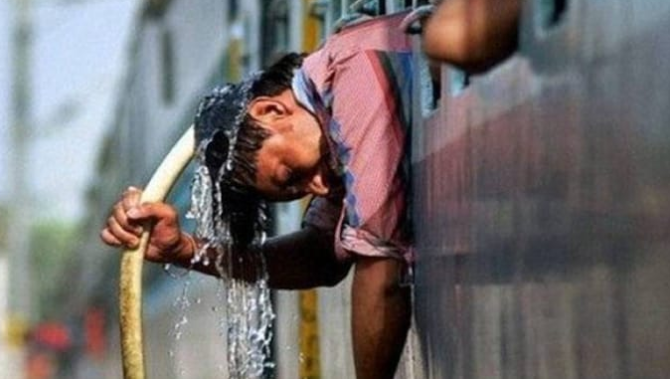
Heat wave sweeps through UP; 54 dead, 400 hospitalised in 72 hours

Over the past three days, Uttar Pradesh’s Ballia District Hospital has recorded a tragic toll of 54 fatalities and approximately 400 hospitalisations, coinciding with the relentless heatwave prevailing in the region.
Medical professionals have acknowledged that while there are multiple causes behind the deaths, the intense heat may have contributed to the situation. Hospital admissions continue to rise due to the scorching temperatures.
The prevailing heatwave in Uttar Pradesh has resulted in most areas witnessing temperatures exceeding 40 degrees. Consequently, the hospital has been inundated with a sudden surge in deaths and patients seeking treatment for symptoms such as fever, respiratory distress, and other health complications.
Also Watch: Heat waves affect agriculture in India
This overwhelming situation has prompted the hospital staff to be on high alert.
According to SK Yadav, the in-charge Medical Superintendent of District Hospital Ballia, there were 23 patient deaths on June 15, followed by 20 on the subsequent day, and 11 yesterday.
Dr. BP Tiwari, the Additional Health Director of Azamgarh Circle, has announced that a team will be dispatched from Lucknow to investigate the possibility of an undetectable disease.
Dr. Tiwari speculated that extreme temperatures, whether excessively hot or cold, pose heightened risks for patients with respiratory issues, diabetes, and high blood pressure. He further suggested that even a slight rise in mercury levels may have contributed to the recent deaths.
Also Watch: Unseasonal rain, heat wave affect mango growers in Odisha
The district hospital is currently experiencing an overwhelming influx of patients, leading to a shortage of stretchers. Many attendants have resorted to carrying patients on their shoulders to the emergency ward due to the lack of available stretchers.
However, Dr. Tiwari assured that while it becomes challenging when multiple patients arrive simultaneously, the hospital does possess an adequate number of stretchers.


